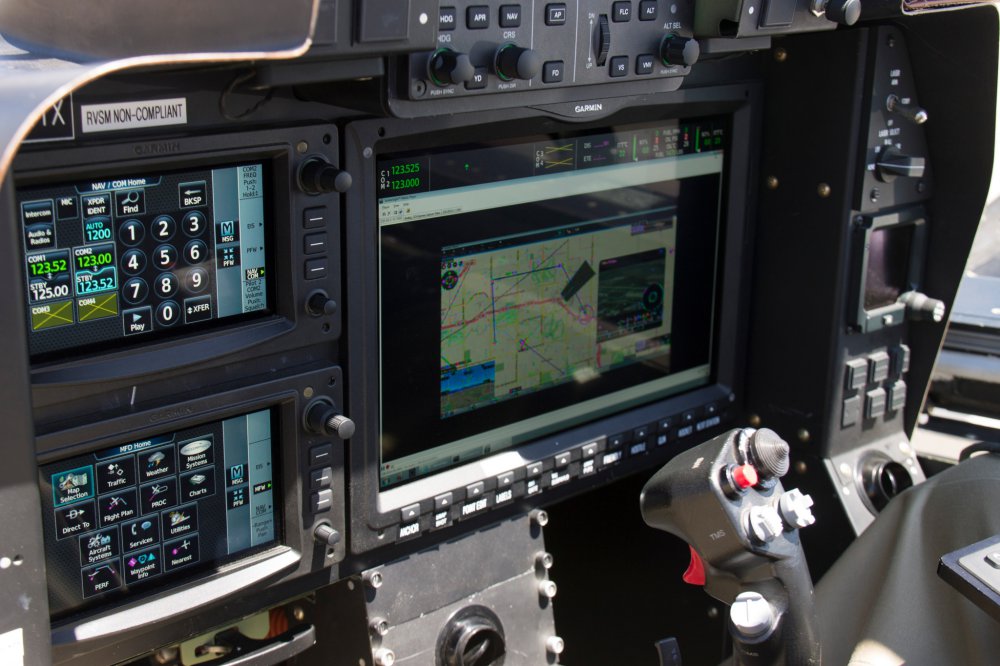Working With UAVs from the Manned Cockpit
In what seems like a sci-fi movie of only a few years ago, “artificial intelligence empowered, war fighting drones” teamed with manned command and control are shaping up as the path forward. The last few years have seen several manned-unmanned teaming (MUM-T) initiatives by the USAF and private industry.
On July 30, 2018 Textron Aviation Defense, LLC announced that they had demonstrated MUM-T capability on the Scorpion Jetwith Textron Systems’ “Synturian®” control and collaboration technology(official Textron Press release here).
MUM-T has been discussed by for several years and we are now starting to see the progress. The assessment of “drones” as “Loyal Wingman” (Air Force Research Laboratory), and in several other roles are simply early indicators that in some form, this is going to happen.
As reported in the July 2018 Mitchell Institute Policy Paper, “Manned-Unmanned Aircraft Teaming: Taking Combat Airpower to the Next Level”the USAF has a “serious capacity gap when it comes to fulfilling mission requirements with its current inventory”. Later the paper notes that “to defend its interests around the globe,” America needs “a robust and varied toolkit.” The paper addresses roles to be filled by unmanned aircraft, bridging the capacity gap, logistics and much more. It’s an enlightening read that incidentally touches on another Scorpion benefit demonstrated in this initiative, “the value of open missions systems for rapid integration of a variety of packages.”
Manned-Unmanned Aircraft Teaming: Taking Combat Airpower to the Next Level
The move towards MUM-T achieves a number of desirable outcomes; closes the capability gap positively with much lower costs than traditional systems; prioritizes unmanned systems for high threat areas; supports and empowers the information battlespace; may reduce impact of pilot shortage vs capability etc.. and more.
An interesting video of the demonstration shows the Scorpion’s cockpit with display of the integration with Synturian. The demonstration utilized the Live, Virtual and Constructive (LVC) environment, with the Scorpion livein the air, the unmanned aircraft systems (UAS) in the virtualand the UAS sensors in the constructive.
This is one more example of the transformation that is the 21stcentury battlespace; MUM-T on a Scorpion with Synturian in an LVC environment. LVC is a training methodology that is critical to train cost effectively for missions in the 21stcentury battlespace.
The ability to function as a “node” in the 21stC battlespace space is no longer optional. In LVC participants can experience multi-domain fusion warfare with simple or extraordinarily complex scenarios.
After flying the capability demonstration, Textron Aviation Defense Senior Flight Test Pilot, Brett Pierson commented; “The tactical and operational ramifications of this new capability are enormous.
“Further extending Scorpion’s sensor suite and penetrating a weather layer to generate target coordinates; or creating a triangulated solution independently; or adding layers to a multi-spectral fused solution, deliver an entirely new set of tactical capabilities that have never been possible in a fighter-typed aircraft.”
The capability to extend the kill web through MUM-T is a desirable capability, particularly with new stand-off munitions like the Raytheon SDB-II.
Such a combination certainly extends the mission set and capability of the Scorpion giving it the ability to execute ISR and attack missions at some distance into hostile space – from the relative safety of a more permissive airspace.
Textron extols a similar business model with the Scorpion as has been applied to the smartphone.
In which case, the Synturian System and MUM-T capability looks like a compelling “App” in the Scorpion’s “App store.”
Editor’s Note: When Michael W. Wynne was Secretary of the Air Force, he explicitly focused on linking the benefits of the F-35 able to manage complex air space with weapons and unmanned systems in what he called the wolfpack concept.
The complexity of airspace management is a key challenge facing teaming of weapons, manned and unmanned systems and the inherent capabilities of the F-35 is seen by Secretary Wynne as a key enabler of evolution in this combat area.
Shaping the Wolfpack: Leveraging the 5th Generation Revolution

